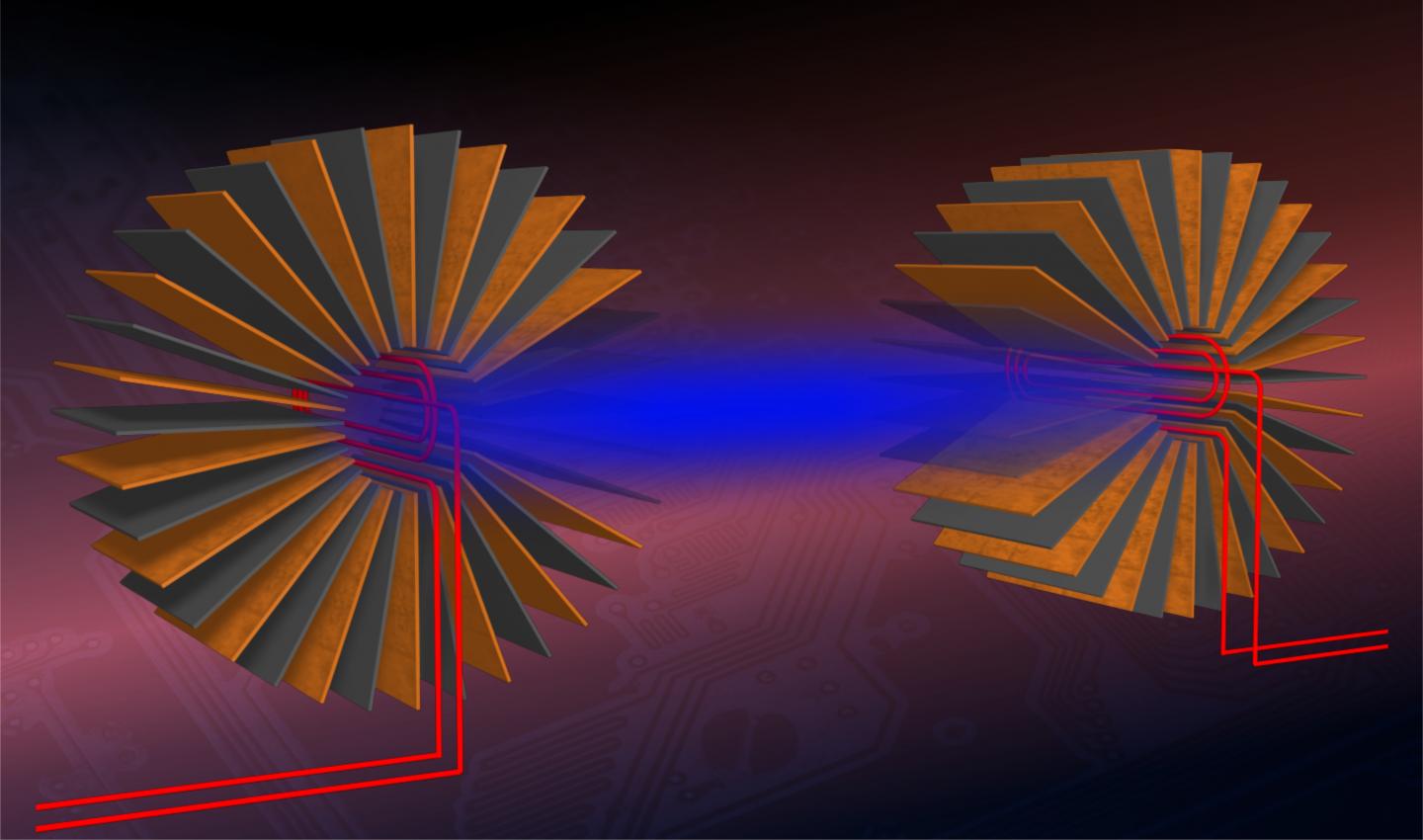Recently, we looked at the numerous ways wireless charging is revolutionizing the world: electric vehicle makers are working on it, cellphones are compatible, and even furniture has the ability to wirelessly charge devices.
While a lot of mobile devices can already be charged wirelessly by placing them on a charging base, researchers are working on charging them wirelessly without even having to take them out of your pocket.
Now, a group of researchers from the Department of Physics of Universitat Autònoma de Barcelona has brought us one step closer to making this concept an efficient reality.

Their system can efficiently transfer electrical energy between two separated circuits with the help of metamaterials. While, the system is still in the experimental stage, once it has been perfected and can be applied to mobile devices, it will be able to charge them wirelessly and at a longer distance than currently possible.
Today’s wireless devices leverage the principal of induction to charge through a special case for the device and a charging base that’s connected to an electrical socket. When the device is placed on top of the base, a magnetic field is generated, which induces an electric current inside the case and, without the need for any cables, powers the device. If the device is separated from the base, the energy is not transferred efficiently enough and the battery cannot be charged.
The UAB system, comprised of metamaterials, combines layers of ferromagnetic materials, such as iron compounds, and conductor materials such as copper. These metamaterials envelop the emitter and receiver and allow for the efficient transfer of energy between the two at great distances.
“Enveloping the two circuits with metamaterial shells has the same effect as bringing them close together; it’s as if the space between them literally disappears”, said Jordi Prat, lead author of the paper.
According to Àlvar Sánchez, who directed the research, the metamaterial advance increased the transmission efficiency 35-fold.
“And there is much more room for improvement, since theoretically the efficiency can be increased even more if conditions and the design of the experiment are perfected,” said Sánchez.
Another benefit of using these materials is that they are abundant and readily available.
The device has been patented by the UAB and companies from several different countries have already shown interest in applying the technology.
Story via Eurekalert.


Comments are closed, but trackbacks and pingbacks are open.